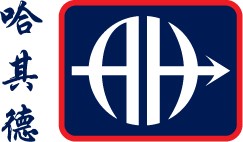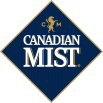Title Page
-
Site conducted
-
Site
-
Building #
-
Location
-
Conducted on (Date and Time)
-
Inspected by
General Inspection
General Information
-
Materials and Products Stored
General Warehouse Areas
-
Are aisles clear and open for material transfers? <br>• No product shall be stored in aisles where it blocks equipment maneuvering.
-
Are floor and rack storage limits properly posted? <br>• One sign near the entrance of the warehouse should indicate the floor rating. <br>• All racks should be labeled with load ratings.
-
Are rack uprights and beams in good condition? <br>• Bent racks and beams must be repaired or replaced. <br>• All racks should be bolted to the floor.
-
Are designated open areas clear of blockage? <br>• Such areas include 600mm perimeters along interior walls as well as electrical panels and eye wash units.
-
Are fire extinguishers and overhead fire sprinklers up to date for inspections and in good condition?<br>• Verify employees have received appropriate training and education.
-
Are all emergency exits clear of blockage and are the exit signs in good condition? <br>• Inspect both inside and outside for blockage of the exits. <br>• All exit signs should be lit & all emergency lights tested.
-
Are all pallets in good condition? <br>• Empty pallets must be stored properly. <br>• No broken or protruding wood or nails. <br>• No pallets on edge. <br>• Avoid storing empty pallets in quantities or densities in excess of O.H. fire sprinkler combustible load ratings.
-
Are overhead lighting, skylights, and roofs in good condition? <br>• Check for leaks, broken panels/light bulbs, and missing bulb shields.
-
Are loose/unboxed materials stacked properly?<br>• Properly stored by blocking, interlocking or limiting the height of the pile.<br>• Insure product stack heights are inforced to prevent container crushing and falling materials.
-
Are all boxes, containers, bundles, etc. stored in tiers that are stacked, interlocked and limited in height? <br>• Stable and secure to prevent sliding or collapse.
-
Are all employees use proper personal protective equipment when handling chemicals?
-
Are guardrails and/or covers provided to protect personnel from the hazards of open sides of stairs, platforms, floor openings, floor holes, mezzanines, equipment pits, and other possible fall hazards?
-
All hazardous materials' containers are properly labelled?<br>• Indicated chemical’s identity, the manufacturer’s name and address, and appropriate hazard warnings.
-
Are all chemicals stored according to the manufacturer’s recommendations and local or national fire codes. (i.e. flammable cabinets, cans, etc.)?
-
Products and containers that are most frequently moved by hand are stored at rack heights that minimize bending / stooping or excess reach to pick up or place?
Dock Areas (Exterior and Interior)
Dock Areas (Exterior)
-
Are approach roads and staging areas (yard) clear for maneuvering, well drained, free of potholes and are all signs in place and legible?
-
Is the approach to the dock well drained and free from potholes or other obstructions? <br>• Pay particular attention to snow, ice, storm water and debris build up.
-
Are dock positions clearly marked with painted lines that the drivers can see to help them spot their trailer accurately?
-
Are all exterior lights working properly? <br>• This item will need to be inspected during the evening when lights are functioning.
-
Are protection barriers around unloaded/ loaded trailers being used correctly?
Dock Areas (Interior)
-
Are visitors and drivers remaining in designated safe areas and walkways?
-
Are all interior overhead lights and trailer lights in the dock area operating properly? <br>• Test all lights that might be off at time of inspection to be sure they work properly
-
Do dock doors work properly and close completely? <br>• Ensure that all doors in use open and close smoothly. <br>• Inspect automatic stops and auto-reversing functions on powered doors
-
Are dock doors closed when not in use? <br>• Closed doors should seal well with the floor and dock leveling plate.
-
Is there sufficient room to maneuver materials? <br>• Dock area floors should be clean and free of trash, debris, or stored items that block the safe passage of loaded equipment
-
Are there sufficient waste cans for the area and are those cans properly labeled and emptied on a regular basis? <br>• In general, floors, ceilings, and exhaust fans are clean and free of cobwebs and dust buildup.
-
Is there adequate natural or mechanical ventilation to control any potential atmospheric hazards? <br>• Where propane-powered equipment is in use, the ventilation must be tested to rule out excess carbon dioxide/monoxide. An Industrial Hygienist may need to do testing.
Equipment Check
Equipment Checks
-
Are all ladders and hand tools are in good condition? <br>• Remove any unsafe equipment from service while awaiting repair.
-
Are forklifts being operated safely and inspected at the start of every shift? <br>• Observe powered industrial truck operations and review training certifications to confirm operators have been adequately trained and evaluated.
-
Do forklifts have functioning warning devices such as back-up alarms, strobes, or horns? <br>• Test equipment as needed, report repairs,and tag out equipment that is unsafe until repairs are made.
-
Are battery charging/changing areas designated for that purpose and contain appropriate emergency flushing facilities (i.e. eyewash and shower)?
-
Are guards in place for any hazard points on moving equipment such as belt guards on compressors or conveyors? <br>• Inspect all powered work tools as well (i.e. cords, insulation, shrouds, casing, guards, etc.).
-
Are all powered industrial trucks (i.e. forklifts) meet the design and construction requirements established in regulatory standards?
-
Are the original capacity, operation and maintenance instruction plates, tags or decals on powered industrial trucks in place and legible?<br>• All authorized equipment and accessory modifications are also identified on those labels/tags/decals.
-
Suitable warning signage around charging pints for FLTs?<br>• To prevent smoking, welding, grinding or other ignition sources from battery charging functions and other flammable materials areas.
-
Are tools and other spark producing metallic objects kept away from the top of uncovered batteries?
Sanitation & Welfare
Welfare Inspection
-
Are aisles, wall perimeters, exterior areas near the building, skips and waste bins free of loose waste and debris?
-
Are toilets available for number of persons on site? Are these in good order, clean, lighting and ventilation?
-
Are sinks and hand drying facilities in order?
-
Are rest areas suitable for number of persons on site? Are facilities for hot water and heating food available? Are tables and chairs provided?
-
Are changing facilities available for persons who need to change clothing on site?
-
Are the storage areas free of pests? <br>
General Safety
Training and General Safety
-
Are emergency evacuation routes and guidelines posted?
-
Are the appropriate posters posted in a conspicuous place?
-
Are accidents, near misses and injuries being investigated and are unsafe conditions being corrected, reported/documented in a timely manner?
-
Is COSHH documents and MSDS available to employees and are they up to date and complete?
Completion
Recommendation
-
Write recommendations here
Completion
-
Full Name and Signature of Inspector










